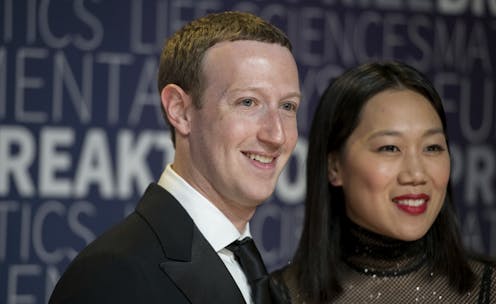What happens to charitable giving when the economy falters?
In past recessions, donors have tightened their pursestrings even as the need has grown. But two scholars explain why, at least for foundations, there's room for more generosity in tough times.

As the new coronavirus pandemic sends the economy into a tailspin, Patrick Rooney, an economist at the Indiana University Lilly Family School of Philanthropy, and Jon Bergdoll, a philanthropy statistician, explain what usually happens to giving during recessions.
Do Americans give more to charity when more people are in need?
No. Overall, for the last 64 years total giving has grown at an average annual rate of 3.3% adjusted for inflation. But the picture changes if you compare what’s happened when the economy has grown versus when it has contracted. During years with economic growth, average giving has increased by 4.7%. During the years marked by economic downturns, average giving has actually decreased by 0.5%.
During economic downturns, more people are out of work and need a hand. But individuals, along with other sources of philanthropy including foundations, typically are making less income and have reduced wealth available, and so they decrease their giving accordingly.
The Great Recession was an extreme example. Total giving dropped by 7.2% in 2008, and then decreased by another 8% in 2009.
The change wasn’t just because Americans had less money. Measuring giving as a share of gross domestic product– the total of all economic activity – is one way experts like us measure relative generosity on a national scale. U.S. giving as a percentage of GDP declined from 2.2% in 2007 to 2% in 2009.
Why don’t people give more during downturns?
There’s a strong relationship between how much money Americans give to charity and their after-tax income. There is a similar correlation between giving and the stock market’s performance. That means people give more when they feel that they have money to spare.
To be sure, some people see charity as a religious or moral obligation that they must try to uphold regardless of their personal economic circumstances. But for some of us, giving is a luxury rather than a necessity that can go on hold when times get tough.
At the same time, there’s some evidence that people may try to help others deal with the hardships that recessions bring about. In 2008 and 2009, giving fell by a total of 15%. But giving to nonprofits such as food banks and homeless shelters that provide essential social services grew by 10%.
What about foundations?
Foundations exist to fund charitable activities such as the pursuit of science, education, culture and religion. They are required by law to disburse at least 5% of their assets. There is no legal limit to how much they can spend, but in practice they try to retain most of their holdings to ensure that they can continue to exist in the long term.
And although spending more than 5% of their assets when times are tough might make a difference and is perfectly legal, historically, most have not taken this step.
We have tried to assess the validity of the concerns foundations have about spending more than 5% of their holdings every year by running thousands of simulations. These experiments modeled a variety of economic circumstances, different investment strategies, and various levels of disbursement relative to a foundation’s total holdings.
We consistently determined that U.S. foundations would have enough funding to keep operating in the the long term. That was true even if they were to distribute as much as 9% of their assets annually for 50 years or even a century.
However, it’s important to acknowledge that their asset base would decline conspicuously. For example, unless they obtained additional capital and depending on how they manage their investments, foundations would lose between a third and a half of their starting value with a 7% payout rate.
Does it have to be that way?
Fortunately, a growing group of foundations is rapidly responding to the many competing needs arising because of the pandemic. More than 40, so far, have joined forces to declare that they’re making grants with fewer or no strings attached and quickly chipping in to support emergency-response funds in hard-hit communities.
The Bill and Melinda Gates Foundation, in particular, has committed US$125 million to speed up research into vaccines and treatments, along with everything it will take to swiftly distribute any breakthrough products as quickly as possible.
Likewise, the Chan Zuckerberg Initiative is partnering with the University of California, San Francisco and Stanford University to quadruple their testing and diagnosis capacity for the new coronavirus. They are also making a new dataset around the virus open access and machine-readable.
Regardless of how large philanthropic institutions respond to the repercussions from bringing the global economy to a screeching halt, it’s important to keep in mind that while foundations play an important role in society, their impact is inherently limited.
All foundations combined held nearly $1 trillion in assets at the end of 2019, prior to the financial upheaval that has surely reduced the value of their holdings.
There’s no amount they can give away over the coming years that would compare to the proposed federal stimulus package. It may top $2 trillion and is likely just the first salvo in response to this battle to stop the new coronavirus and its health and economic effects.
Editor’s note: The Gates Foundation is a funder of The Conversation Media Group.
[You need to understand the coronavirus pandemic, and we can help. Read our newsletter.]
Patrick Rooney and the Lilly Family School of Philanthropy receives funding from numerous charities, foundations, and donors. He serves on numerous boards, task forces, and advisory committees for charities.
Jon Bergdoll does not work for, consult, own shares in or receive funding from any company or organization that would benefit from this article, and has disclosed no relevant affiliations beyond their academic appointment.
Read These Next
From truce in the trenches to cocktails at the consulate: How Christmas diplomacy seeks to exploit s
World leaders like to talk up peace at Christmastime. But alongside the tales of seasonal breaks in…
How to reduce gift-giving stress with your kids – a child psychologist’s tips for making magic and a
Depending on family circumstances and a child’s personality type, gift giving runs the gamut of fun…
Autocracies in transition: In 2025, Cameroon and Tanzania rulers clung to power — but look more vuln
The countries, whose respective leaders recently won widely disputed elections, offer contrasting examples…






